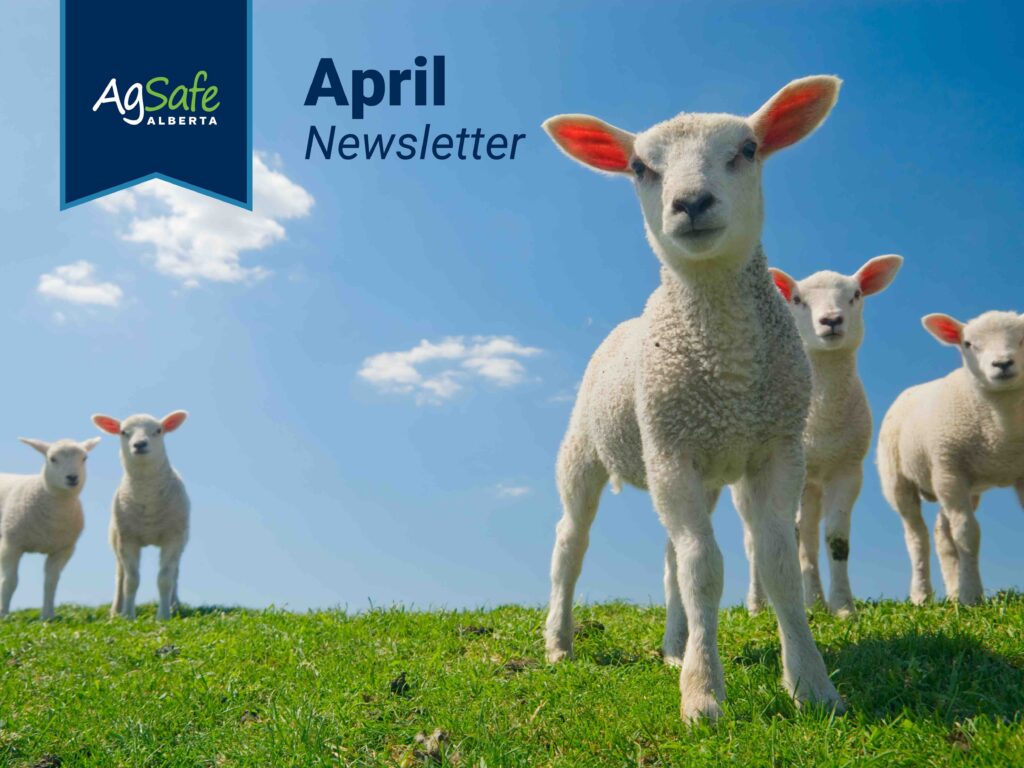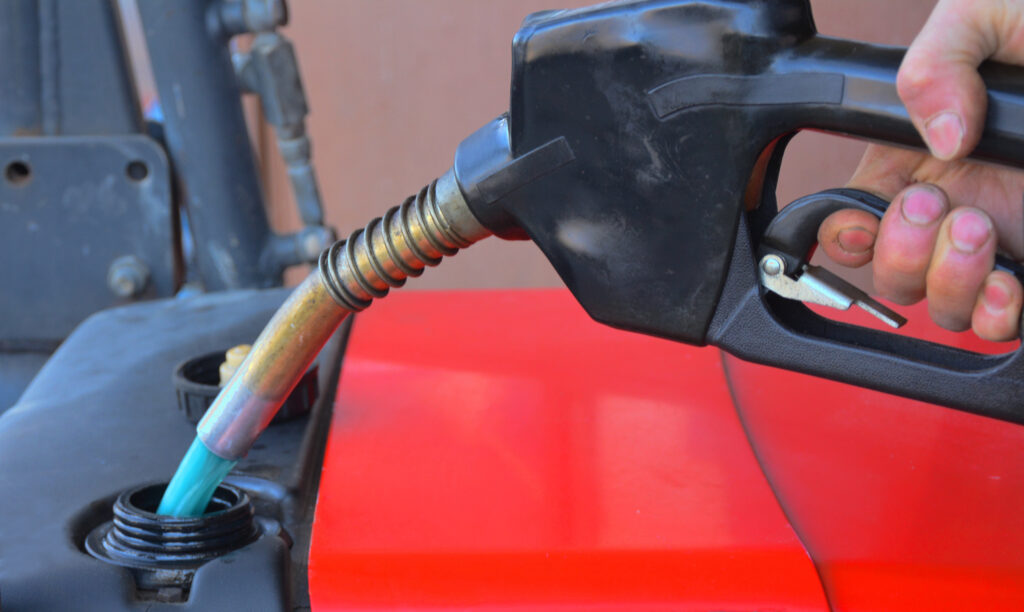
It Happened To One of Us
 Teaching Old Dogs New Tricks
Teaching Old Dogs New Tricks
Addressing increased safety risks for farmers as we age
By Ian Chitwood
Ian Chitwood is the Chair of the AgSafe Alberta Board of Directors and farms near Airdrie, AB.
As an industry, it’s time for those of us in agriculture to acknowledge an uncomfortable truth: we are getting older.
According to the latest agriculture census data, the average age of Canadian farmers is now 56, while the average age of farm operators has risen to 58. That same data confirms that these older farmers now make up the majority: more than 60 per cent of farm operators in Canada are now 55 and over, and that number has grown six per cent since 2016.
However, this isn’t necessarily a bad thing.
Older farmers are a huge asset to our industry. They are a generation that has struggled through hardships unknown to newer generations, maintaining viable farms and ranches throughout challenging weather cycles, restrictive political and social environments, and fluctuating global market conditions.
They are invaluable to our industry, our businesses and our families, and we need them and their expertise more than ever. However, we must acknowledge another uncomfortable truth: these farmers are also our most vulnerable. The proof is in the stats, as 80 per cent of farm fatalities in Alberta from 2020-21 involved someone 50 or over.
No one can take your place, so please consider the risks that come with farming as we age and the easy steps, we can take to mitigate these risks.
Let’s consider why risks increase after age 50. As we age, so do the number of health issues we experience. These can include hearing and vision loss, slower reaction times, reduced sleep quality and muscle strength, as well as new medical conditions and side effects from medications.
Another factor is that older farmers tend to have established behaviour patterns, which they can be reluctant to change. While you might have been able to get away with doing things a certain way before – by luck, chance or physical abilities – this becomes less likely over time.
One final consideration here is that older farmers and ranchers often work alone. We know that this puts them even more at risk, as 50 per cent of farm safety incidents in Canada occur when the victim is working alone.
The greatest threat when working alone is being in an emergency situation without the ability to call for help. Unfortunately, I have my own experience in this area.
We had an incident where an employee pulled a pin on a loaded round bale wagon. There were no wheel chocks on the bale wagon, so it rolled forward, trapping them between the wagon and the tractor tire.
The employee was stuck there, with no phone, for more than 30 minutes before help arrived. We are extremely lucky this resulted in only minor injuries, but that is often not the case.
Unfortunately, stories like this are shockingly common. You could get caught in, or trapped under, a piece of equipment you were in the middle of repairing. You could have a medical emergency, such as a heart attack, and be left incapacitated. You could fall from a height and be left unconscious or so injured you can’t move.
In all these scenarios, if you’re working alone, without the means to call for help, the outlook can be grim.
I’m not asking you to imagine these things to make you miserable or anxious. I’m doing it because just knowing these risks makes you safer. Once you know the risks, you can better plan for how to mitigate them – and if you need help with those safety plans, AgSafe Alberta is here to assist you.
Older farmers often worry about the safety of everyone else around them – their family, their employees – without giving their own well-being a second thought. This is not a sustainable approach to safety.
Remember, no one can take your place.
AgSafe Alberta FarmSafe Plan Learning Program is Online & Free

The AgSafe Alberta FarmSafe Plan Learning Program has officially launched!
It is a free, self-paced learning program that introduces Alberta producers to health & safety fundamentals and explains how they can apply this information to their specific operations.
This program was designed for both family farms and farms with employees. It will walk you through creating a farm-specific health and safety program, explain why these elements are needed, and support you in putting your farm’s health and safety program into action.
People who will benefit from taking this program include owner/operators, farm managers, colony leadership, agricultural health and safety practitioners, supervisors and anyone else who wants to better understand farm safety and how it applies to Alberta farms and ranches.
Everyone who completes the whole program will receive a personalized certificate of completion.
Get started today at agsafeab.ca or by clicking HERE!
For anyone who just getting started learning about farm safety, AgSafe Alberta also offers the simple, practical & free FARMERS CARE program, which can can be accessed at agsafeab.ca or or by clicking HERE.
Why You Need WHMIS Training
WHMIS stands for Workplace Hazardous Information System, and it is a system that provides information on hazardous products that you commonly use on farms, such as different types of cleaners, disinfectants, fuels and hydrogen peroxide (yes, even hydrogen peroxide can be hazardous!).
WHMIS training supports you in doing things like:
- Labelling and storing chemicals correctly.
- Choosing the right product for the task.
- Following manufacturer instructions regarding use, handling and storage.
- Taking the proper actions following an exposure, spill or fire involving product.
It doesn’t matter if you are a family farm or have a farm with employees, ensuring that everyone on your operation knows how to protect themselves from the hazards of the products you use is essential.
Click HERE to get started with the AgSafe Alberta WHMIS 2015, Pesticide, Veterinary Drug and Medicated Feed Awareness Course today!
Safety First, Last Thoughts

Driving in fog
Fog can occur for a variety of reasons, and it is difficult to predict… so you might not find out it is foggy until you are on the road. Fog consists of water droplets suspended in the air at the ground level and is essentially equivalent to driving though a cloud.
- Fog is often heaviest in the mornings and at night, so try to avoid driving until it has had time to “burn off.”
- Ensure your low-beam lights and fog lights are on if you encounter fog while driving. Low light is important, as high beams will create a glare that reflects back at you, but without lights, other vehicles may not be able to see you.
- Ensure your windshield wipers are in good condition, as they will be needed to keep your windshield clear.
- When you encounter fog while driving, slow down and leave lots of stopping distance between you and other vehicles; in addition to limited vision, the road surfaces may also be slippery.
- If the fog is so thick that you decide you are better off stopping, ensure that you pull far off the roadway, perhaps on a road approach off of a field; never stop on the road.
- Watch for animals, car accidents, emergency crews and tow trucks; be ready to slow down even more.
CONTACT US
For general inquiries: info@agasafeab.ca /403-219-
For our hotline for incidence assistance: 1-833-9AGSAFE



